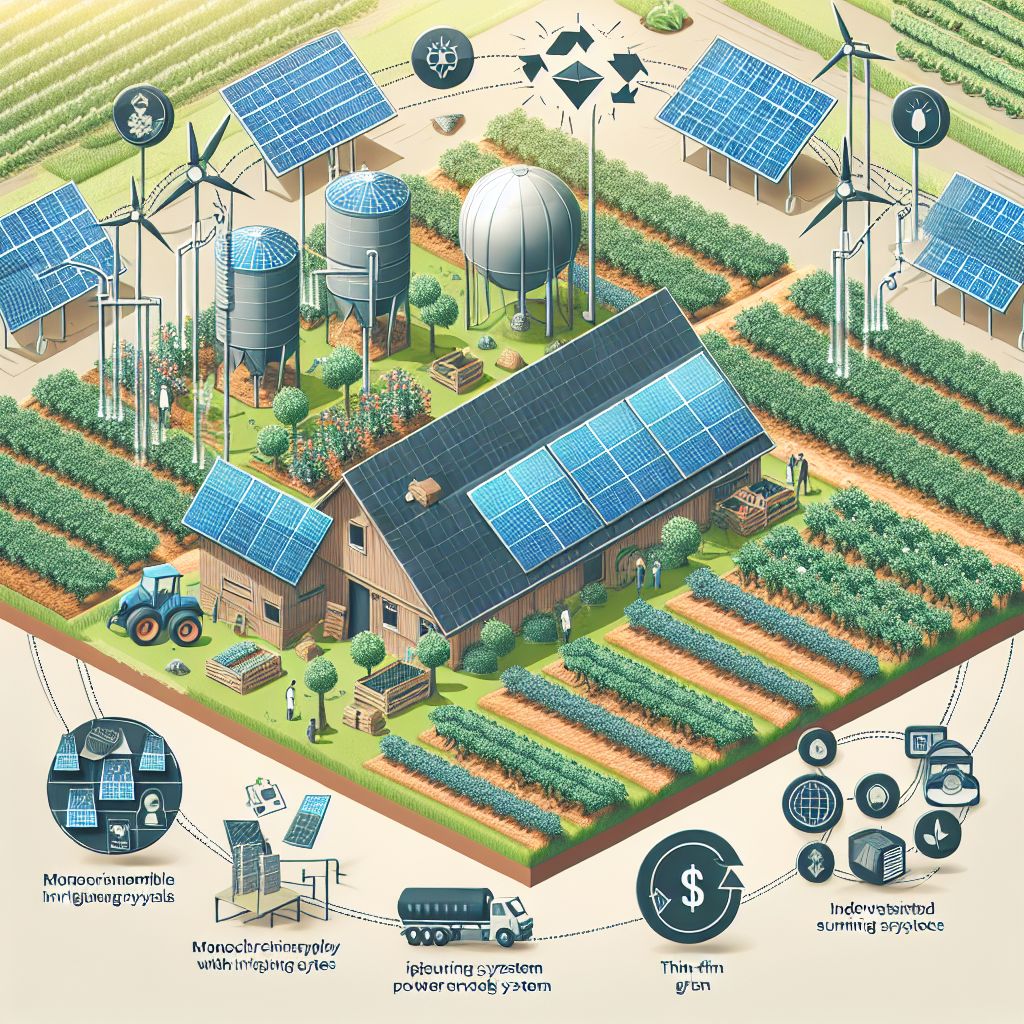
Key Takeaways:
Using solar power for irrigation can greatly cut down on energy expenses and make your farm more sustainable.
Monocrystalline, polycrystalline, and thin-film solar panels each have distinct advantages that may suit different agricultural requirements.
It can be relatively simple to incorporate solar panels into your existing irrigation system with the right planning.
It’s vital to understand the parts and upkeep of solar-powered irrigation systems for long-term success.
There are a variety of financing options, including incentives and grants, to help cover the upfront costs of solar irrigation projects.
Why Your Farm Should Consider Solar Irrigation
Moving to solar irrigation isn’t just a trend, it’s a smart step towards sustainability and cost-effectiveness. With the increasing prices of traditional energy sources, solar power is a renewable, eco-friendly alternative that can significantly reduce your farm’s operating costs.
Understanding the Cost-Benefit Ratio of Solar Irrigation
While it may seem like a large investment at first, the numbers clearly show that investing in solar irrigation is a smart choice. Even though the initial cost can range from $20,000 to $100,000, depending on the size and complexity of the system, the savings on your electricity bill can make up for it. In fact, you could save up to 70% on your electricity bill every year. Plus, solar panels can last for 25 to 30 years, so you’ll be reaping the benefits for decades.
The Environmental Benefits and Sustainability of Solar Irrigation
Switching to solar irrigation isn’t just a smart financial move; it’s also an environmentally friendly one. Solar panels produce clean energy, which can help lower the carbon footprint of your farm. This commitment to sustainability can enhance your farm’s reputation and contribute to the worldwide fight against climate change.
Dependability and Freedom from Energy
One of the most persuasive arguments for transitioning to solar irrigation is its dependability. Solar panels supply a steady stream of energy, particularly in remote locations where grid access is limited or non-existent. By tapping into the sun’s energy, farms can achieve energy freedom, reducing the hazards associated with power failures and volatile fuel costs.
Here is a table comparing the cost and efficiency of an irrigation system with and without solar panels:
|
Aspect |
Without Solar Panels |
With Solar Panels |
|---|---|---|
|
Initial Cost | ||
|
Operating Cost |
Very low or zero fuel/electricity costs after installation. 1, 4 | |
|
Efficiency |
Depends on energy source efficiency. 4 |
Depends on solar radiation, temperature, system design. 1, 4 |
|
Environmental Impact |
Higher carbon footprint. 1 |
Lower carbon footprint, renewable energy. 1 |
|
Location Flexibility |
Limited to grid-connected or fuel access areas. 3 |
Can be used in remote off-grid areas. 3 |
|
Maintenance | ||
|
Lifespan |
Shorter for fuel-based systems. 1 | |
|
Long-term Costs |
Higher due to recurring fuel/electricity bills. 1 |
Lower total 20-year costs by 50-60% compared to traditional systems. 1 |
|
Government Incentives |
Generally none |
Many governments provide tax credits, subsidies for solar irrigation. 1 |
Understanding the Types of Solar Panels for Your Irrigation System
It’s important to select the appropriate solar panel for your irrigation system. The three most common types of panels are monocrystalline, polycrystalline, and thin-film. Each type of panel has its own unique features, efficiency levels, and costs. Therefore, it’s crucial to determine which type will best meet your needs.
Choosing the Right Solar Panel Type for Your Irrigation System
Monocrystalline panels are highly efficient and durable, but they are also the most expensive. Polycrystalline panels are a more affordable option, and they perform well, but they are not quite as efficient. Thin-film panels are extremely flexible and lightweight, which makes them perfect for unconventional or large-scale installations. The energy needs of your farm and the amount of space you have available will help you determine which type of panel is the best fit.
Here is a table showing the pros and cons of using different types of solar panels with an irrigation system on a farm:
|
Panel Type |
Pros |
Cons |
|---|---|---|
|
Monocrystalline Panels |
– High efficiency (15-22%), producing more power per square foot. 1, 2, 4 | |
|
Polycrystalline Panels |
– Lower upfront cost than monocrystalline. 1, 2 |
– Lower efficiency and shorter lifespan than monocrystalline. 2, 4 |
|
Thin-Film Solar Panels |
– Lowest upfront cost. 1, 2 |
– Lowest efficiency (7-13%). 2, 4 |
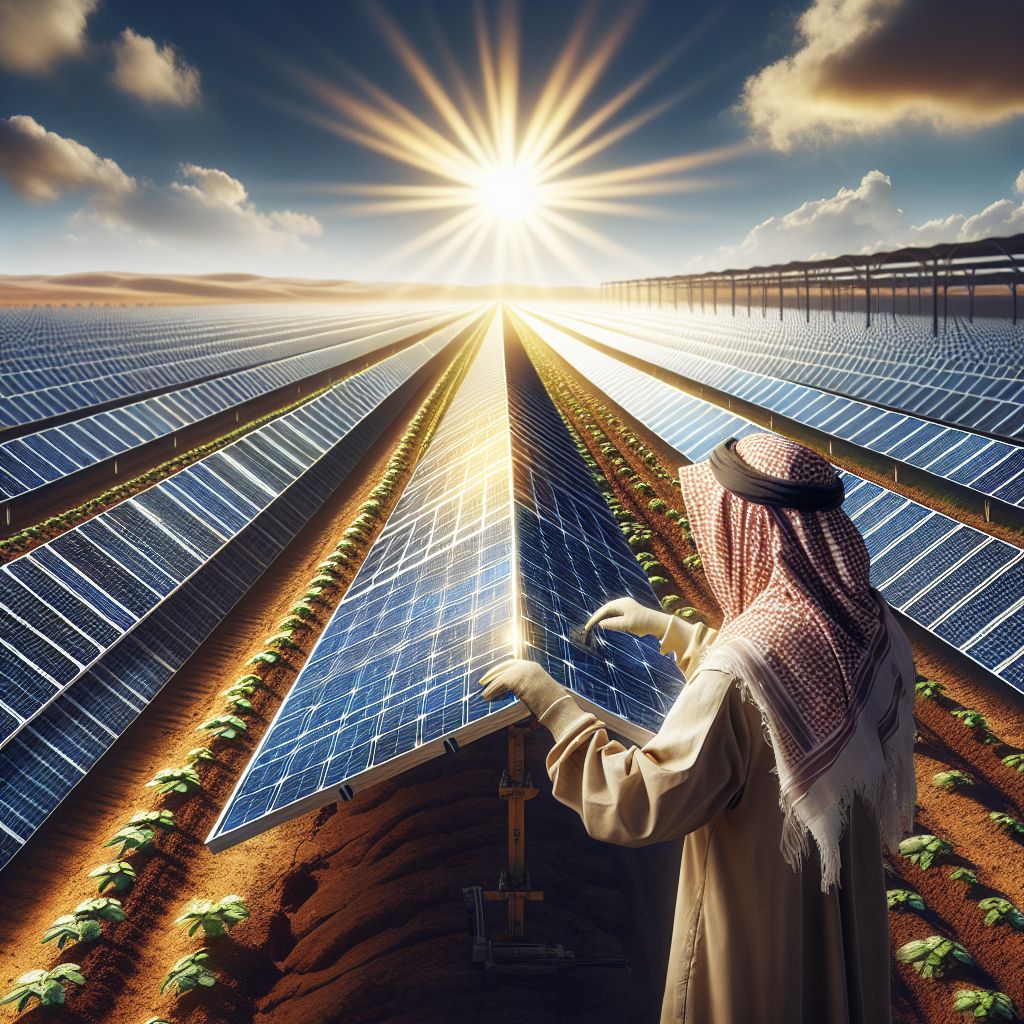
Why Monocrystalline Panels are the Most Efficient for Farm Use
Monocrystalline solar panels are the go-to for many farmers because of their high efficiency and long-lasting reliability. These panels are made from single-crystal silicon which allows for a better flow of electrons and a higher energy conversion rate.
Getting to Know the Benefits of Monocrystalline Solar Panels
Monocrystalline panels often have efficiency rates ranging from 15-20%, which means they convert more sunlight into electricity than other kinds. This makes them especially useful in places with not much space, as you don’t need as many panels to produce the same amount of power.
How to Make the Most of Your Farm’s Layout When Installing Monocrystalline Panels
When it comes to installing monocrystalline panels, it’s all about location, location, location. You want to find a spot that gets a lot of sun and isn’t shaded by trees or buildings. And don’t forget about the angle and direction of the panels – you’ll want to adjust these to get the best performance all year round.
“Switching to monocrystalline solar panels was a revolutionary move for our farm. Our energy bills dropped significantly, and the system paid for itself in less than five years. The added benefit of contributing to a cleaner environment made the decision a no-brainer.” – A testimonial from a satisfied farmer.
Keep an eye out for our next chapter where we’ll dive deep into the details of polycrystalline and thin-film solar panels, along with the hands-on steps to incorporate solar energy into your current irrigation system.
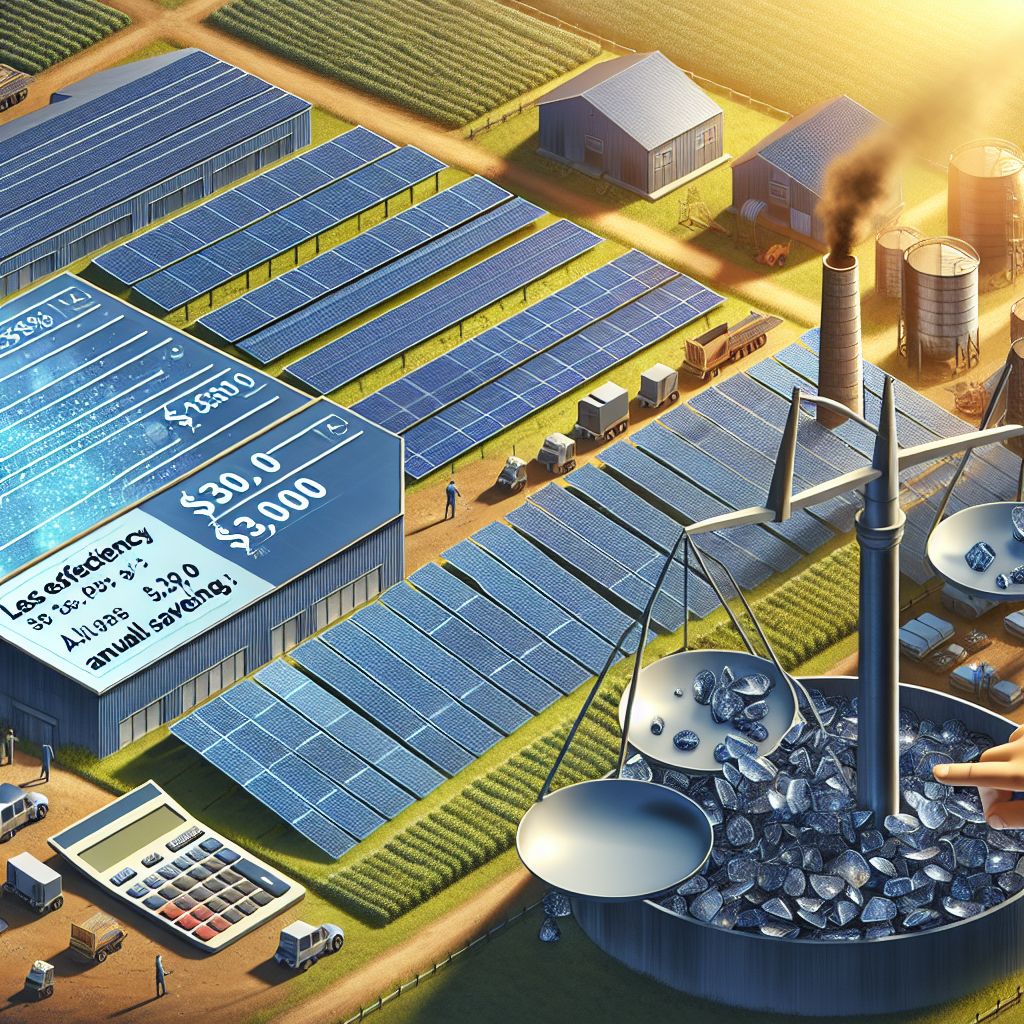
Polycrystalline Panels: Budget-Friendly
With their blue tint and speckled look, they stand out, and although they may need more room to equal the power output of monocrystalline panels, they are a cost-effective choice for larger spaces. When evaluating their effectiveness, you should consider the specific energy requirements of your farm and whether you have enough room for the required number of panels.
Evaluating Polycrystalline Panels
Polycrystalline solar panels are a top pick for many farmers, offering a good balance between performance and cost. These panels are made up of multiple silicon crystals, making them a bit less efficient than monocrystalline panels. They typically have efficiency rates of 13% to 16%. Nevertheless, they are a dependable energy source for irrigation systems.
Figuring Out the Return on Investment for Polycrystalline Solar Choices
Grasping the return on investment (ROI) for polycrystalline solar panels is crucial to making a knowledgeable choice. To figure out the ROI, take into account the initial setup costs, the amount of power the panels will generate, and the expense of your current power usage. For instance, if the initial expense is $30,000 and the panels save you $3,000 annually on electricity, the system would pay for itself in 10 years. Plus, the lifespan of solar panels often goes beyond 25 years, which means you can look forward to many years of earnings after reaching the break-even point.
Why Polycrystalline Panels are Cheaper: The Materials and Process
Polycrystalline panels are made by melting silicon fragments together to create the wafers for the solar cells. This process is less wasteful and cheaper than the process used to create monocrystalline panels, which is why polycrystalline panels are cheaper upfront. While this does mean that they are slightly less efficient, the trade-off can be worth it for farmers who are more budget-conscious, especially considering the lower initial investment.
Polycrystalline panels are cheaper and simpler to make, which requires less energy. This makes them a popular choice for farmers new to solar irrigation. As technology improves, the efficiency difference between polycrystalline and monocrystalline panels is getting smaller, making them a more viable option.
In choosing polycrystalline panels, you should not only think about the initial costs and efficiency. The durability, warranty, and compatibility with your existing systems are also essential factors that you should consider.
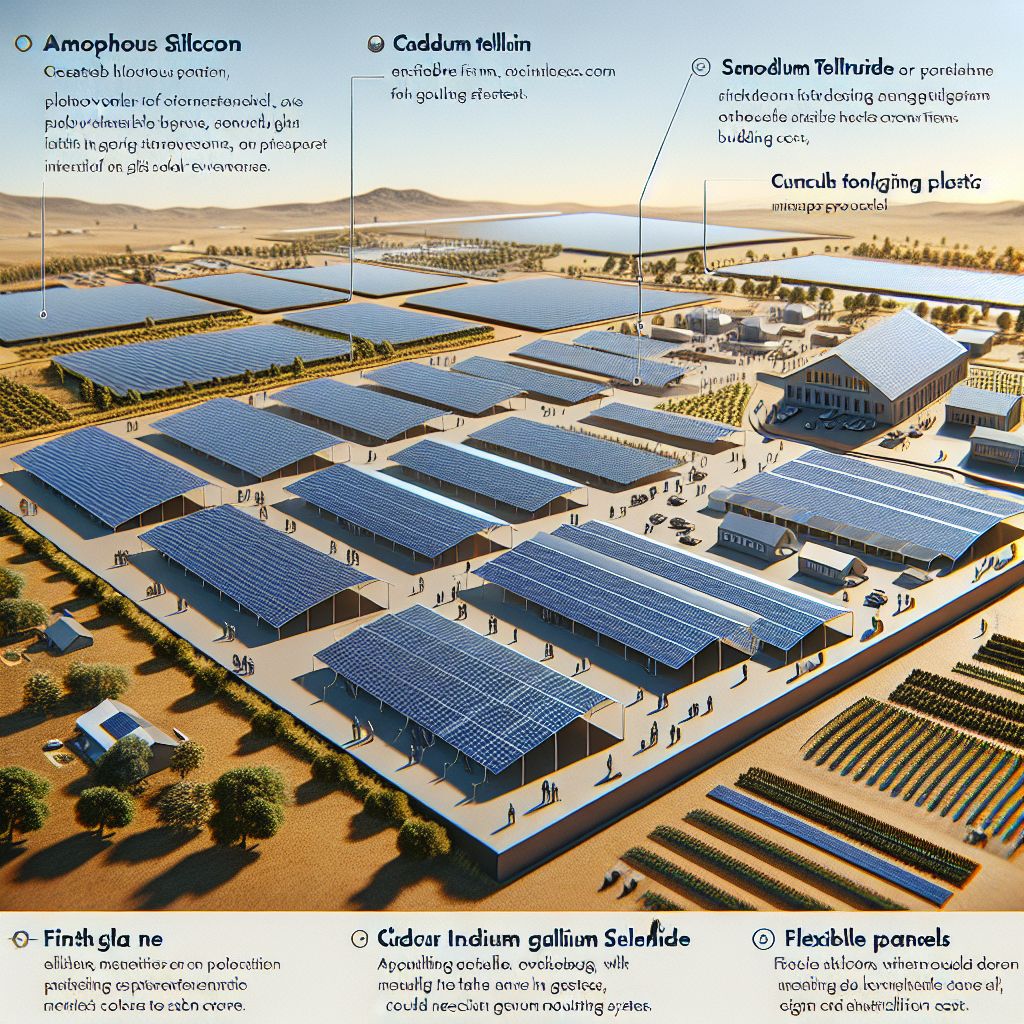
Thin-Film Solar Panels: Flexible Option
Thin-film solar panels represent the cutting edge in solar technology, with their flexibility and straightforward installation process. These panels are created by applying a photovoltaic material to a substrate, making them light and able to conform to a variety of surfaces.
Thanks to their lightweight build, thin-film panels can be mounted on a variety of structures, even those that may not be able to bear the weight of standard panels. This makes them a great choice for farms with big buildings or unusual spaces.
How Thin-Film Solar Panels Adapt to Farm Environments
Thin-film solar panels offer a level of adaptability on farms that can revolutionize their use. They can be installed on the ground, on rooftops, or even built into the materials of the building. Their ability to flex and fit to curved surfaces creates new opportunities for where they can be placed and can help to optimize solar exposure.
Thin-film panels are especially good for covering large areas without the need for a lot of mounting systems, which can lower the cost of installation. Also, they don’t work as well in high-temperature conditions, but this is less of a problem in places with mild climates, making them a practical choice for many farms.
The Good and Bad of Thin-Film Panels for Irrigation Systems
Thin-film panels have a few benefits for irrigation systems, like their sleek design and speedy setup. However, they usually have lower efficiency rates, around 10-13%, so you’ll need more panels to get the same amount of energy as monocrystalline or polycrystalline panels.
On a positive note, thin-film panels are more effective in low-light situations and are less impacted by shading. This can be especially useful for irrigation schedules that are set for early in the morning or late in the afternoon. Plus, their flexibility and light weight make them more resistant to environmental damage from things like wind or snow load.
What are the materials used to create thin-film solar panels and why are they flexible?
Thin-film solar panels are usually created using a range of materials, such as amorphous silicon, cadmium telluride (CdTe), or copper indium gallium selenide (CIGS). These panels are created by depositing one or several thin layers of photovoltaic material onto a substrate, which could be glass, plastic, or metal. This process results in panels that are not only flexible, but also much lighter than silicon panels.
The flexibility of thin-film panels and their manufacturing process makes them more adaptable. Even though they may not be as efficient, the ability to incorporate them into a farm’s landscape and structures can often make up for this.
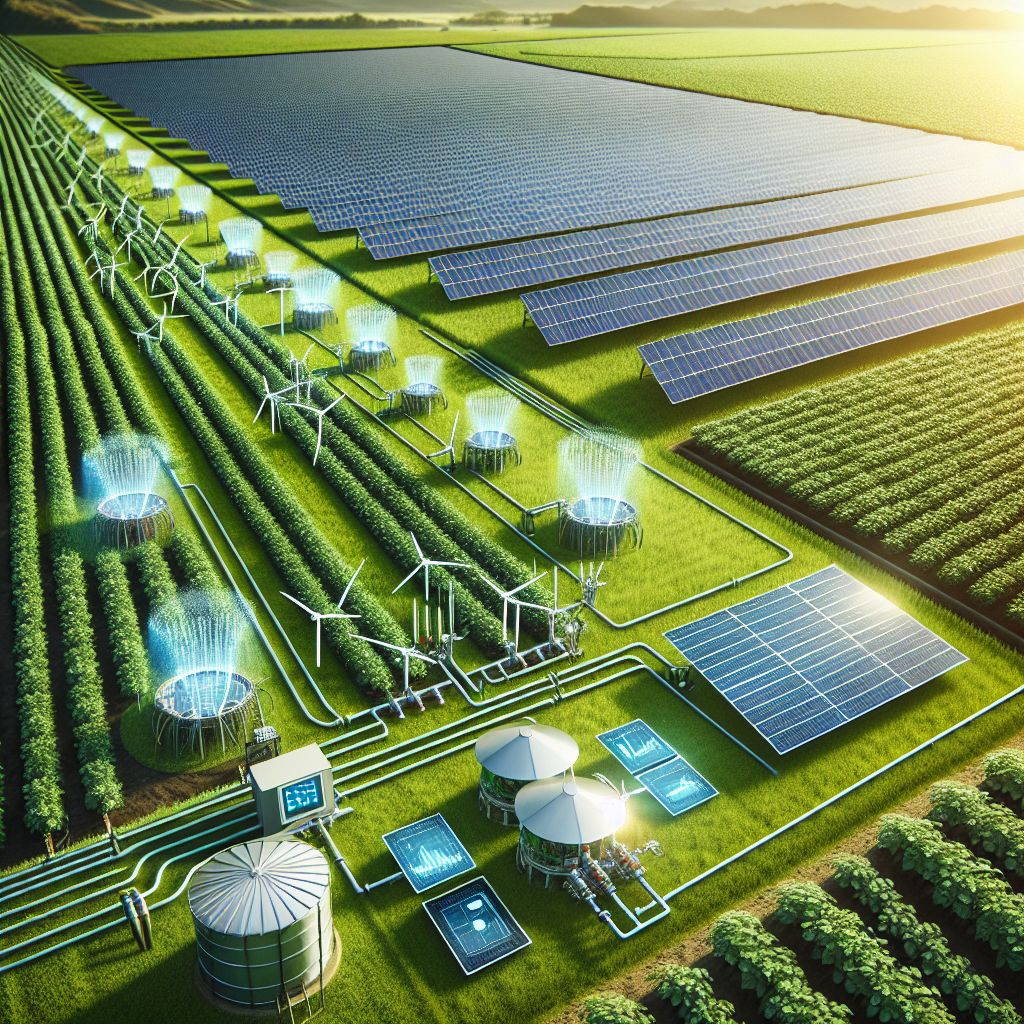
Installing Solar Panels into Your Current Irrigation System
Though incorporating solar panels into your irrigation system may seem overwhelming, it can be a seamless process with the right planning. The first step is to conduct a comprehensive assessment of your existing system. This includes understanding its energy needs, assessing the state of your equipment, and identifying appropriate places for panel placement.
What to Think About When Picking Solar Panels for Irrigation
Prior to integrating solar panels into your irrigation system, keep the following in mind:
Power Requirements: Determine how much power your irrigation system uses to figure out how large your solar panel array needs to be.
Location Evaluation: Assess potential sites for installing solar panels, taking into account factors like sun exposure, soil conditions, and how close they are to your irrigation equipment.
Type of Panel: Decide between monocrystalline, polycrystalline, or thin-film panels based on their efficiency, cost, and the requirements for installing them.
Compatibility with System: Make sure that the solar panels can be connected to your current irrigation controls and pumps.
Financial Plan: Plan your budget, factoring in the cost of installation, maintenance, and any potential financing or incentives.
All of these factors will have a significant impact on the success of your solar-powered irrigation project.
Connecting Solar Panels to Your Irrigation System
After you’ve chosen the perfect solar panels for your farm, the next task is to connect them to your irrigation system. This process involves linking the solar array to the irrigation pump, which might necessitate the addition of inverters and batteries if you choose an off-grid system.
For grid-tied systems, you’ll need to collaborate with your local utility provider to guarantee a correct connection and metering. It’s also recommended to seek advice from a solar power specialist who can help with the technical integration details and guide you through any regulatory hurdles.
A Comprehensive Guide on How to Convert Your Irrigation System to Solar
Converting your irrigation system to solar power entails a few crucial steps:
Consultation: Collaborate with a solar energy expert to design a system that fits your farm’s requirements.
Permitting: Secure the necessary permits and approvals from local authorities and utility companies.
Installation: Arrange for the solar panels and related equipment to be professionally installed and connected to your irrigation system.
Commissioning: Test the system to make sure it operates efficiently and achieves energy production goals.
Monitoring: Set up a monitoring system to keep track of energy production and use, optimizing performance over time.
By following these steps, you can successfully transition to solar-powered irrigation and enjoy long-term benefits for your farm.
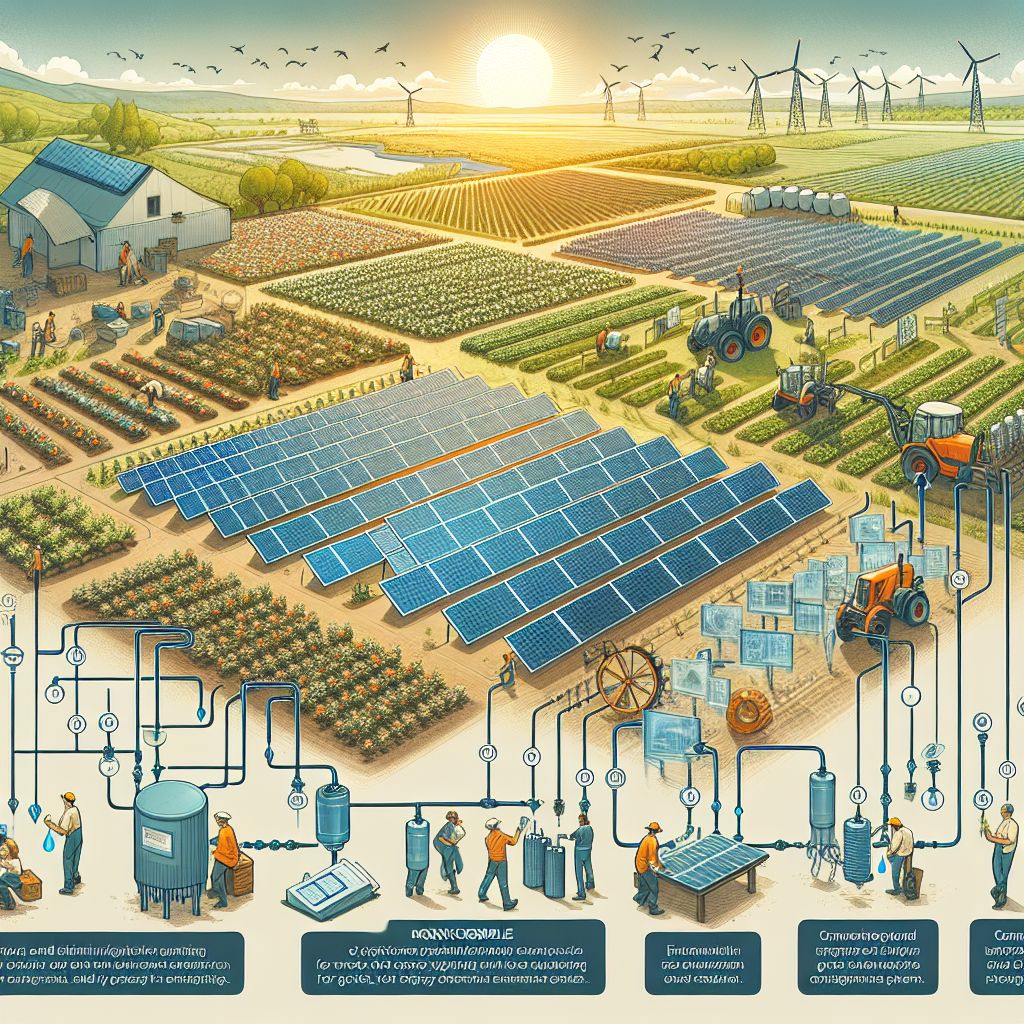
Getting to Know Solar Irrigation Systems
Solar irrigation systems use the power of the sun to run water pumps, making it an environmentally friendly and cost-effective solution for watering crops. To understand how these systems can be specifically applied to different types of farming, it’s important to explore examples such as efficient watering solutions for growing tomatoes, which can provide insight into their functionality and benefits.
What Makes Up a Solar-Powered Irrigation System and How Does It Work?
Any solar irrigation system worth its salt will have solar panels, an inverter (which changes DC to AC power), a pump controller, batteries (for storing power in off-grid systems), and of course, the irrigation pump. The way it works is that the solar panels soak up the sun’s energy and turn it into electricity that powers the pump. You can use this setup to pump water from a variety of sources, like wells, rivers, or lakes, to water your fields.
Things to Consider for Solar Irrigation Maintenance
Just like any other equipment on the farm, solar irrigation systems need maintenance to ensure they last long and work efficiently. Here are some key maintenance tasks:
Keep the solar panels clean from dust, debris, and bird droppings that may lower efficiency.
Check system parts like the inverter and batteries to make sure they’re working as they should.
Keep an eye on the system’s energy production and water output to catch any problems early.
Have a professional inspect and maintain the system at least once a year to handle any wear and tear.
If you take care of your solar irrigation system, it can keep providing reliable, cost-effective watering for your crops.
Deciding to use solar panels for your farm’s irrigation system is not only a green choice, but it also makes financial sense. If you properly plan and understand the different solar panel choices, integration methods, and maintenance needs, you can create a sustainable and efficient irrigation system that will benefit your farm for many years.
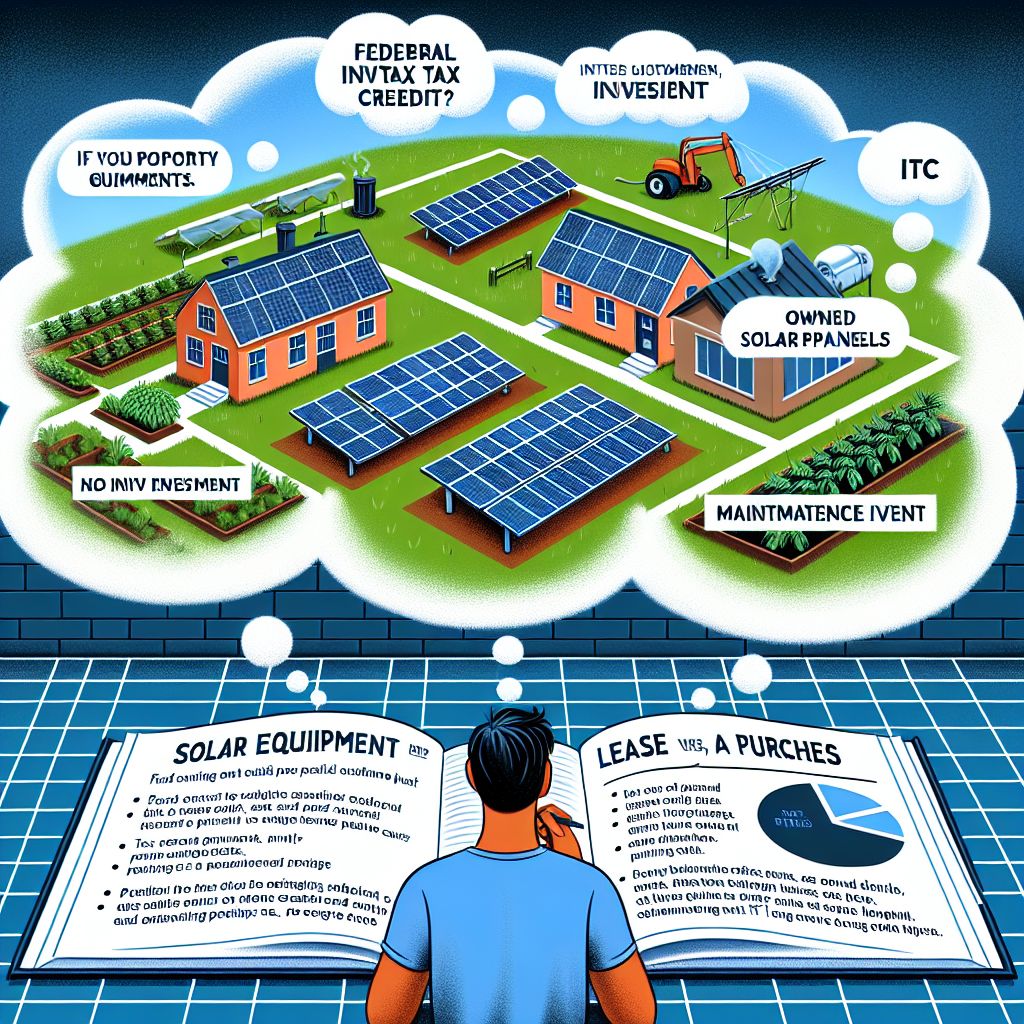
Paying for Your Solar Irrigation Setup
Getting the money together for a solar irrigation system can be one of the toughest parts of the process. But, there are a variety of financing options and incentives out there to make it easier.
Understanding Government Incentives for Renewable Energy
There are a variety of incentives available from the government for renewable energy projects. These include tax credits, grants, and rebates. The federal investment tax credit (ITC) in the United States, for example, allows you to deduct a portion of the cost of installing a solar energy system from your federal taxes. Many states also offer their own incentives, further reducing the upfront costs.
Imaginative Funding Solutions: Solar Equipment Lease vs. Purchase
You have the choice to purchase or lease solar panels. Leasing may be a good option because it frequently does not require any initial investment and includes maintenance. However, owning the system increases your property value and allows you to potentially earn money by selling excess energy back to the power grid.
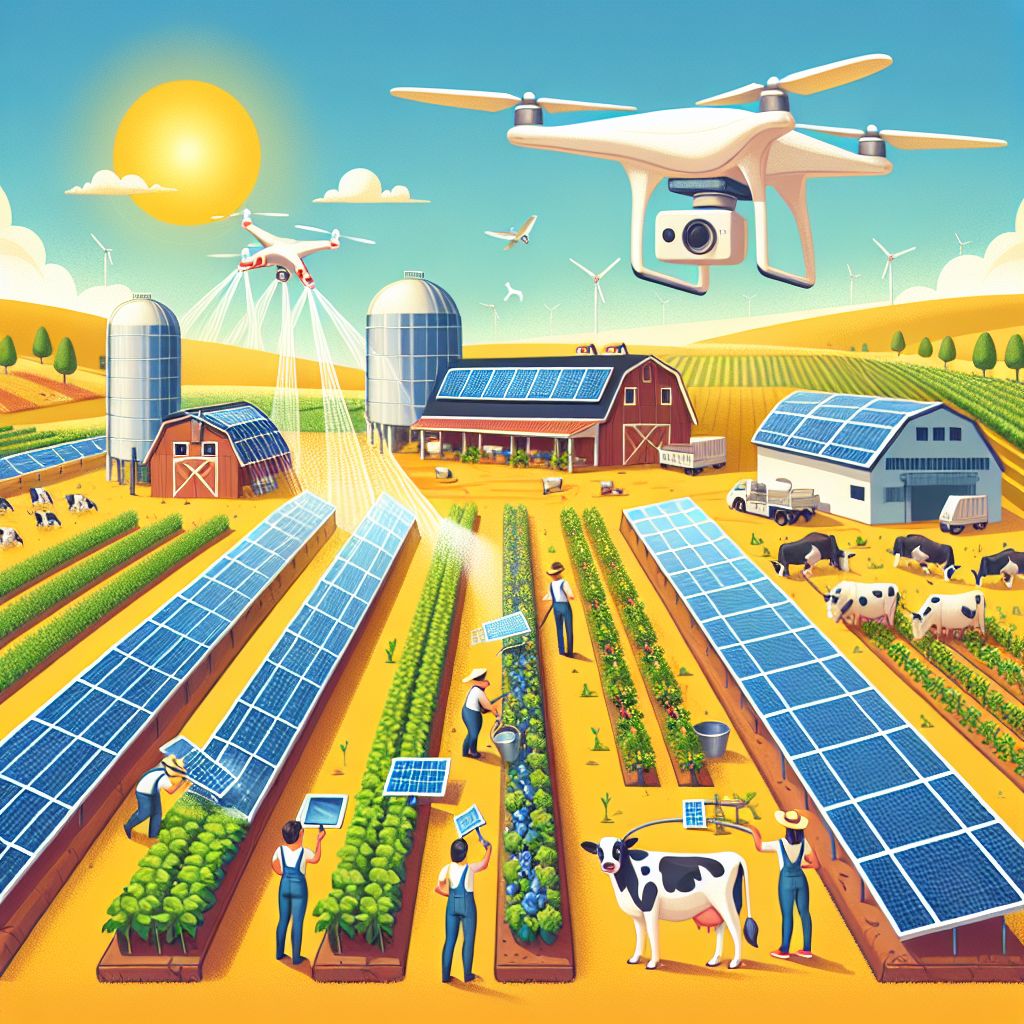
Conclusion: Should Farmers Invest in Solar Panels for Their Irrigation System?
To sum up, even though the upfront cost of a solar irrigation system can be high, the long-term savings, greater energy self-sufficiency, and positive impact on the environment make it a good investment for many farmers.
Real World Examples: Successful Solar Irrigation on Farms
Many farms around the world have seen great success with solar irrigation systems. A vineyard in California, for example, reduced its energy bills by 75% after installing a solar irrigation system. A dairy farm in New York managed to stabilize its energy costs, which had previously been its second highest expense, after feed.
Predicting the Future of Solar Irrigation in Farming
The future of solar irrigation seems promising, as improvements in technology make systems more effective and less costly. As global focus on sustainability continues to grow, it’s probable that more farms will adopt solar power for their irrigation requirements.
Frequently Asked Questions:
What is the usual payback period for a solar irrigation system?
Typically, a solar irrigation system pays for itself in energy savings within 5 to 10 years. However, this can fluctuate depending on the system’s size, local energy prices, and any incentives that may be available.
Can Solar Irrigation Systems Be Scaled for Both Small and Large-Scale Farms?
Absolutely, solar irrigation systems can be tailored to meet the requirements of both small family farms and large commercial operations. The scalability of solar makes it a feasible option for a range of agricultural settings.
What Occurs with Solar Irrigation Systems During Overcast or Low-Light Situations?
Even on overcast days, solar panels can continue to produce electricity, albeit at a lower efficiency. To ensure uninterrupted operation, systems can be fitted with batteries to store surplus energy or connected to the grid to draw power as required.
Does Operating a Solar Irrigation System Come with Any Recurring Costs?
Although the energy generated by solar panels doesn’t cost anything, you need to factor in recurring costs like maintenance, insurance, and possible equipment replacement over time. Nevertheless, these costs are usually less than those associated with conventional energy sources.







Leave a Reply